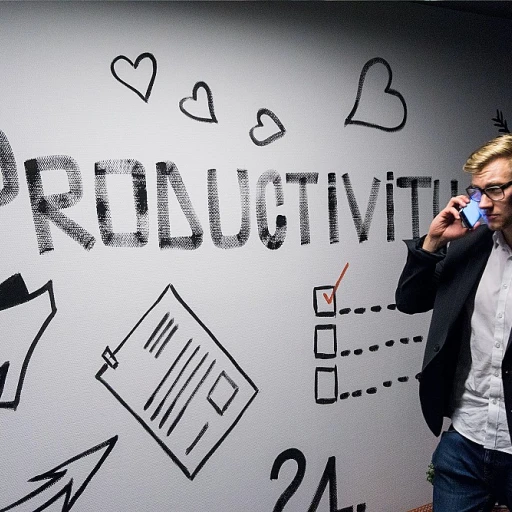
Understanding the Skills Gap
Grasping the Essence of Skill Disparities
The concept of a skills gap often surfaces in discussions of employee development and professional advancement. But what exactly does it entail? A skills gap represents the difference between the skills employers need and the skills that their employees actually possess. In today's rapidly evolving workplace, this gap can impact every level of an organization, from the operational team members to top-tier management.
In recent years, the shift in required skills has been more pronounced due to technological advancements and changes in work culture. Employees and organizations face challenges in aligning their skill sets with market demands. Addressing this gap involves not just enhancing technical abilities, but also honing soft skills like communication, emotional intelligence, and conflict resolution.
As the demand for skills such as time management, problem-solving, and leadership grows, organizations find themselves reassessing their training development strategies. With a focus on skills that enhance team dynamics and contribute to customer service excellence, companies can implement comprehensive training programs. These initiatives are not merely about enhancing capabilities but are pivotal for career development and overall employee satisfaction.
Moreover, acknowledging the skills gap as a tangible issue is the first step in formulating effective staff development strategies. By understanding the scope of the issue, organizations can embark on structured employee training and professional development programs tailored to fill these gaps. The integration of project management, communication skills, and strategic learning topics into training courses can yield significant progress.
In addressing this challenge, leveraging innovative solutions such as virtual labs and technology-driven approaches can promote more effective training outcomes. The adoption of such methods ensures that employees are not only keeping pace with industry requirements but are also equipped to propel the organization towards its goals.
Identifying Key Skills for Development
Spotlight on Essential Competencies
To effectively bridge the skills gap, it is crucial to identify the key skills that require focus in staff development initiatives. These competencies often encompass a mix of hard and soft skills. Striking the right balance can empower employees, fostering both personal and professional growth. Employees tend to excel when they possess a blend of technical expertise and interpersonal skills. For instance, roles in project management or customer service benefit greatly from both technical know-how and strong communication skills. The ability to interact seamlessly with team members, manage conflicts, and solve problems creatively are invaluable assets in any professional context. Some critical development areas to consider include:- Communication Skills: Effective communication, both verbal and written, can significantly enhance workplace dynamics and lead to more successful outcomes.
- Leadership Skills: Developing leadership qualities can help employees at all levels to take on management roles, making your organization run more smoothly.
- Emotional Intelligence: This includes the ability to recognize and manage one's own emotions as well as the emotions of others, a key component of teamwork and collaboration.
- Time Management: Employees who manage their time well tend to be more productive and less stressed, leading to better job satisfaction.
- Conflict Resolution: Training team members in conflict resolution can prevent disruptions and maintain a harmonious work environment.
Tailoring Training Programs
Designing Custom-Fit Training Approaches
Finding the ideal training program requires organizations to deeply assess and understand their employees' specific needs. A one-size-fits-all approach is rarely effective when addressing particular skills development requirements. Consider these strategies to tailor a training program that aligns closely with both organizational objectives and individual employee aspirations:- Assessing Employee Needs: Begin by conducting comprehensive skills assessments for your team members. This involves understanding the professional development topics and skills such as leadership, emotional intelligence, and communication skills that need enhancement. Use these insights to create targeted training courses that address the actual gaps within the workforce.
- Setting Clear Objectives: Define precise goals for your training programs, ensuring they align with your organization’s broader objectives. Are you aiming to enhance customer service skills, improve project management, or fine-tune time management? Ensuring clarity in your objectives will provide a roadmap for your development strategy.
- Incorporating Professional Development: Engage employees by offering opportunities for career development. This may include leadership roles, problem-solving tasks, or even conflict resolution workshops. By focusing on individual career paths alongside team objectives, organizations can increase motivation and engagement within the workforce.
- Fostering Adaptive Learning Environments: Modern workplaces thrive on continuous learning. Tailoring training courses to enhance soft skills, while embedding adaptability into the development framework, helps teams adjust to evolving market demands. Encouraging team members to partake in ongoing learning opportunities promotes a culture of growth.
Leveraging Technology in Staff Development
Embracing Technological Tools for Staff Advancement
In today's fast-paced workplace, leveraging technology is crucial for effective staff development. The implementation of technology not only streamlines training programs but also enhances the learning experience for employees. By integrating various digital tools, organizations can provide their teams with more flexible and efficient learning opportunities, addressing both individual and organizational needs. One of the key advantages of technology in training programs is the accessibility it offers. Employees no longer have to be confined to a physical location or set schedule to participate in employee training. Online courses and webinars provide on-demand access to materials, allowing team members to learn at their convenience. This is particularly beneficial for covering fundamental professional skills such as communication and time management. Moreover, technology facilitates the personalization of training development. Through analytics and data insights, organizations can assess the strengths and weaknesses of their employees, tailoring courses to match specific employee development needs. Such tailored training courses can focus on vital areas like emotional intelligence, problem-solving, and conflict resolution. Collaboration tools and project management software also play pivotal roles in enhancing team communication and productivity. These platforms enable teams to work together seamlessly, encouraging collaboration and the sharing of knowledge amongst team members. Effective communication skills are vital in any workplace, and utilizing the right software can foster a stronger, more communicative team dynamic. Virtual reality and augmented reality are examples of cutting-edge technologies that have revolutionized employee training. These immersive experiences offer practical, hands-on learning without the associated risks or costs of real-world trial and error. Simulations can be particularly effective in areas such as leadership and customer service, providing realistic scenarios for employees to hone their skills. Incorporating technology into career development initiatives not only caters to the learning preferences of a diverse workforce but also ensures that the organization remains competitive in its industry. By allowing employees to explore various development topics through technological means, organizations empower their teams to take ownership of their professional advancements. Emphasizing the use of technology in training programs is not just an option—it is a necessity for forward-thinking companies committed to the ongoing growth of their employees and overall management success.Measuring the Impact of Development Initiatives
Evaluating the Effectiveness of Development Strategies
Measuring the impact of staff development initiatives is crucial for ensuring that the efforts put into training programs translate into tangible benefits for both employees and the organization. This involves a systematic approach to assess how well the development strategies are working and identifying areas for improvement.
Key Performance Indicators (KPIs)
Establishing clear KPIs is essential for evaluating the success of training and development programs. These indicators should align with the organization’s goals and the specific skills being developed. Common KPIs include:
- Employee performance metrics
- Retention rates
- Employee satisfaction surveys
- Feedback from team members and leadership
Feedback Mechanisms
Regular feedback from employees participating in training courses is vital. This feedback helps in understanding the effectiveness of the training topics covered and whether they meet the career development needs of the staff. Encouraging open communication within teams can also provide insights into how training programs are perceived and their impact on workplace dynamics.
Analyzing Learning Outcomes
Assessing learning outcomes involves evaluating whether employees have acquired the intended skills and knowledge. This can be done through assessments, practical evaluations, and observing improvements in soft skills such as communication skills, emotional intelligence, and problem-solving abilities.
Continuous Improvement
Development initiatives should be dynamic, adapting to the evolving needs of the organization and its employees. By continuously analyzing the impact of training programs, organizations can refine their strategies, ensuring that they remain relevant and effective. This ongoing process supports a culture of continuous learning and adaptation, which is essential for long-term success.
Incorporating these evaluation methods into your staff development strategy will not only help in measuring the impact but also in enhancing the overall effectiveness of your training programs, ultimately benefiting both the organization and its employees.
Continuous Learning and Adaptation
Embracing Continuous Growth
The journey of professional development doesn't end with one training session or certification. In the ever-evolving landscape of the workplace, continuous learning and adaptation are essential for both personal and organizational growth. Employees who embrace this mindset tend to prosper, contributing effectively to their teams and driving the company forward. Organizations can facilitate this culture of continuous growth by:- Fostering a Learning Environment: Encourage employees to ask questions, seek out mentorship opportunities, and pursue further training. A culture that values learning over perfection helps in nurturing innovation and problem-solving skills.
- Regular Feedback and Assessment: Ongoing management feedback helps employees identify their strengths and areas for improvement, making them more engaged and committed to their development path. It also assists in aligning their career goals with the organizational objectives.
- Encouraging Collaboration and Knowledge Sharing: Creating channels for employees to share insights and best practices enhances communication skills and empowers them to be proactive contributors to the team. Topics such as leadership development and team dynamics can be regularly discussed in workshops and team meetings.
- Incorporating Diverse Training Topics: From soft skills like emotional intelligence and communication skills to technical expertise in project management, a variety of training courses ensure that team members are well-rounded and adaptable to different challenges in their roles.
- Supporting Career Development Initiatives: Organizations should support employees in their long-term career aspirations by providing them with resources, opportunities for career development, and ways to apply new skills in their current roles.












